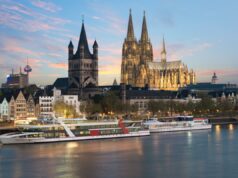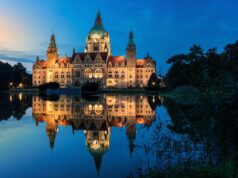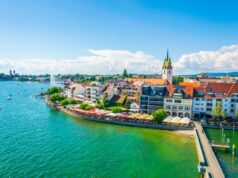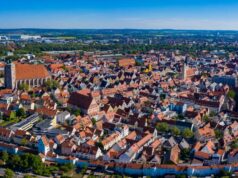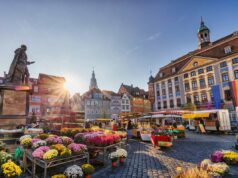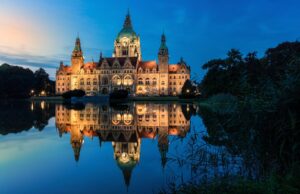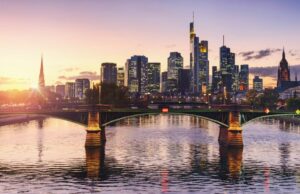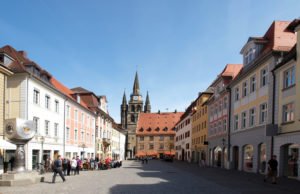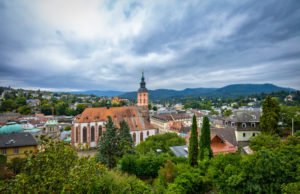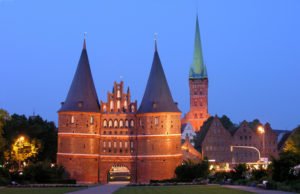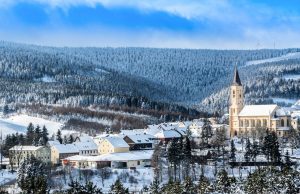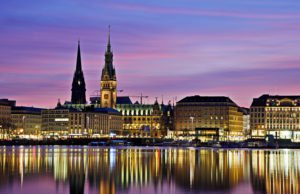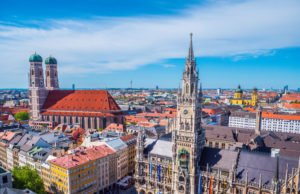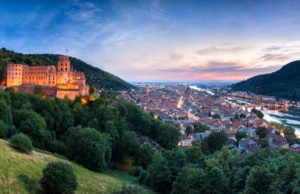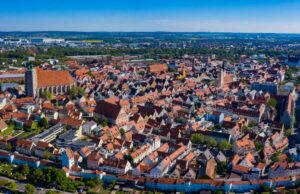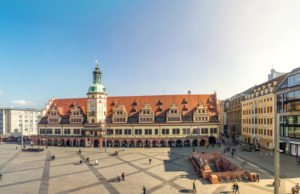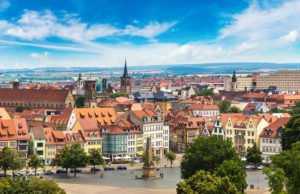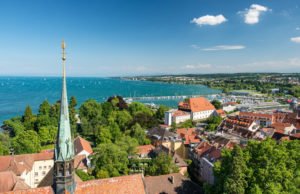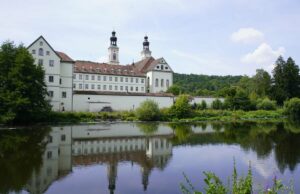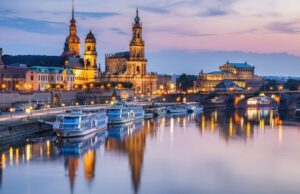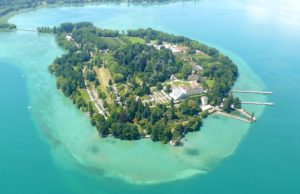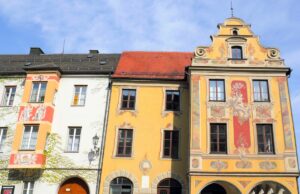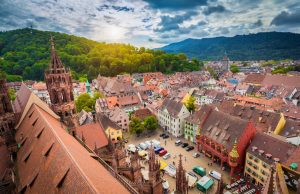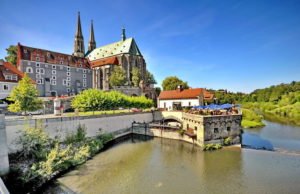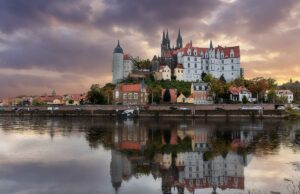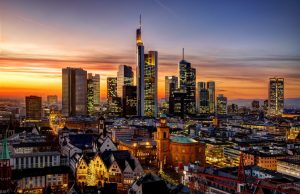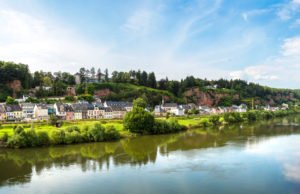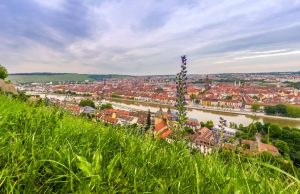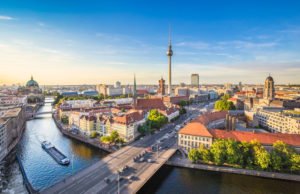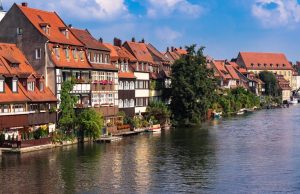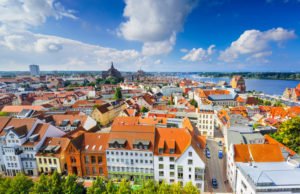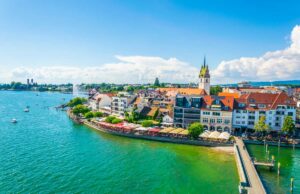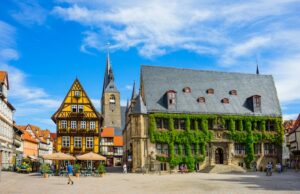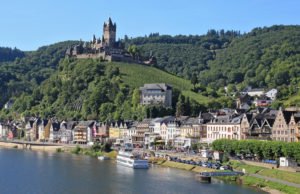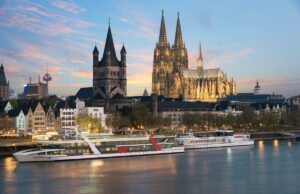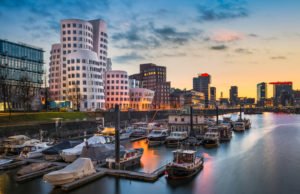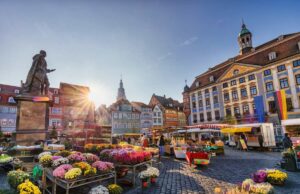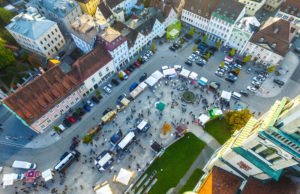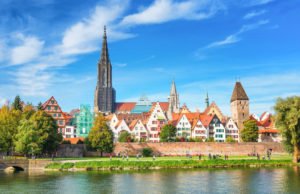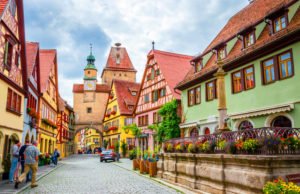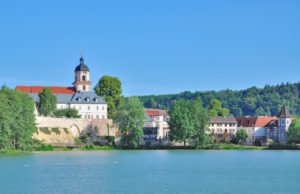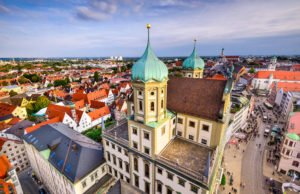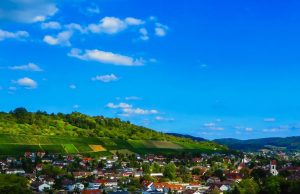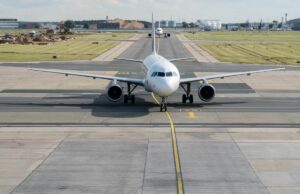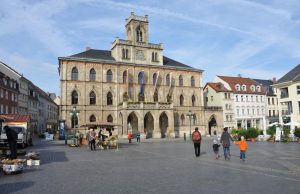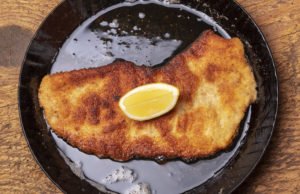The bustling metropolis of Cologne has long been a draw for visitors from all over Germany and beyond. The country’s fourth largest city is home to more than a million people, and prides itself on a liberal, cosmopolitan atmosphere and a hip vibe.
Here’s what you need to know:
Location & how to get there
Cologne sits on the banks of the Rhine, one of Europe’s most major rivers, in the heart of the North Rhine-Westphalia region in the west of the country. Also close by, further north up the river, are the cities of Düsseldorf, Dortmund and Essen.
Cologne is chiefly served by Cologne-Bonn Airport, a large international hub linking the city with destinations throughout Europe, the US and Asia. Cologne-Bonn is a major base for a number of budget airlines including Ryanair and Eurowings, so travellers can find cheap deals to the city even in high summer.
It’s also very possible to reach the city by train from almost anywhere else in Europe; Cologne has fast, frequent and reliable rail links to all other major German cities and international destinations such as Paris, Amsterdam, Brussels and Budapest.
What to see
Cologne is dominated by its gargantuan, awe-inspiring gothic cathedral, now declared an official UNESCO World Heritage Site. The 157m twin spires are the largest in the world and can be seen from all over the city and beyond. Visitors can climb the south tower’s 533 steps to a viewing platform more than 100m above ground, and will be greeted with spectacular views over the river and across the city. The building is open to the public most days, and there are guided tours available for visitors to learn about its rich mediaeval history.

First-rate museums can be found aplenty in Cologne, and the entry fees aren’t going to break the bank. The largest and perhaps most popular is Museum Ludwig, which hosts an impressive collection of modern art including a number of Picasso’s – and local artists’ work too. Other highlights include the Roman-Germanic museum, where you’ll find art and culture from medieval Cologne, the House of Fragrances, and Cologne City Museum.
Cologne zoo is located north of the city centre and is one of the oldest, but also the most modern, zoological gardens in the world. It’s best known for its extensive collection of primates, although visitors can set eyes upon more than 500 species of animal in total, originating from every corner of the earth.
In February, carnival is a huge event in Cologne and goes on for a couple of days. The streets are filled with people in costumes and everyone is having a great time.

If you visit during the months of November and December, Cologne’s quaint and traditional Christmas markets are guaranteed to put a smile on your face. Wander between the wooden huts selling Glühwein, stollen and other German festive treats, perhaps stopping to pick up a Christmas gift or two from the sellers offering local goods and produce.
And of course, a trip to Cologne wouldn’t be complete without a visit to the altstadt, or old town; the cobbled streets and colourful, traditional buildings that survived the World War II bombings make for an extremely pretty setting to relax with a weissbier or two.

When to visit
Cologne is an agreeable destination for a city break at any time of year, but the majority of tourists tend to visit during either the hottest summer months of July and August to bask in the sunshine, or the festive months of November and December to enjoy the Christmas markets and the convivial atmosphere. Visiting outside of these months, however, is likely to mean a better deal on accommodation and travel prices.

What to eat (and drink)
One of the Rhineland’s most popular local brewhouse specialties is Himmel und Ääd (heaven and earth) with a glass of Kölsch beer. Heaven is apple pieces or apple sauce, while earth is potato – often accompanied by various meats and fried onions. Kölsch is light and hoppy, produced with Pilsner malt in a brewery on the outskirts of the city, and has been a favourite among locals for many years.

Locals will typically accompany a Kölsch with a shot of Flimm, a Rhineland liquor with a rubust, sweet flavour broadly similar to schnapps.
Another specialty unique to the region is Rheinischer Sauerbraten, a unique take on the popular German “sour roast” dish, which comprises a sour-sweet marinated beef joint, but unlike elsewhere in Germany, with the addition of raisins and gingerbread. You’ll find Rheinischer Sauerbraten in any good German restaurant.

Also worth a try is Westfälischer Schinken, or Westphalian smoked ham, again unique to the Rhineland, which is smoked over juniper wood and then left to mature for several weeks.
Where to stay
Travellers of every taste and budget will find myriad options in Cologne. Backpackers on a budget have a wealth of hostels to choose from, most of which offer a social atmosphere, bar and restaurant facilities, and beds from around €13-17 depending on the time of year. The Meininger hostel and hotel chain, which offers budget accommodation all over Germany, is highly recommended; the Cologne hostel is geared heavily towards backpackers and guests can kick back in a chic, relaxed environment.
Mid-range accommodation options are aplenty too. The ever-reliable Ibis Budget and Ramada hotel chains offer double rooms from €50-70 per night, while the small and independent Hopper Hotel provides modern rooms in a historical German townhouse from around €70.
If you’re looking for a taste of luxury, you won’t be short of choices either. The five star Romantik Hotel im Wasserturm occupies a converted water tower in the heart of the Old Town (rooms from around €130). Guests of the Dorint Hotel, meanwhile, can make use of the hotel’s health club with large indoor swimming pool, a marble bathroom and full buffer breakfast. Rooms begin at €130-150.
Public Transport
It’s easy to get around Cologne thanks to its extensive bus and tram network, which connects the city’s hotspots and suburbs with quick, inexpensive services. Day tickets are available for tourists visiting on a weekend break, while the Cologne WelcomeCard also gives reductions of up to 50% on more than 100 attractions.

Shopping areas
Cologne’s bustling shopping streets easily rival those of Milan or Madrid. The Schildergasse is Germany’s most visited shopping street, and is home to such major brands Adidas, Puma, Esprit and Tommy Hilfiger, plus Cologne’s very own Hard Rock café. Head to Ehrenstraße for a younger, more vibe and shops including Levi’s and Liebeskind, while the Belgian Quarter is where you’ll find boutiques selling handmade and unique wares, and, of course, some truly irresistible chocolate.
Nightlife
The city’s vibrant nightlife scene leaves little to the imagination. There are more than 70 clubs and discos scattered around the city, with spanning music genres as diverse as jazz, heavy metal, industrial techno and underground hip-hop.
A favourite venue among locals is Club Bahnhof Ehrenfeld, which holds a varied selection of popular events ranging from poetry readings to concerts and club nights, and also a gay dance party every month.
Electronic music lovers should check out Heinz Gaul, a club venue with one of Germany’s best soundsystems and regular big name bookings.
Those looking for a few beers in a more relaxed environment should head to the old town, where locals and tourists mingle in the dozens bars and pubs of every style lining the streets.


